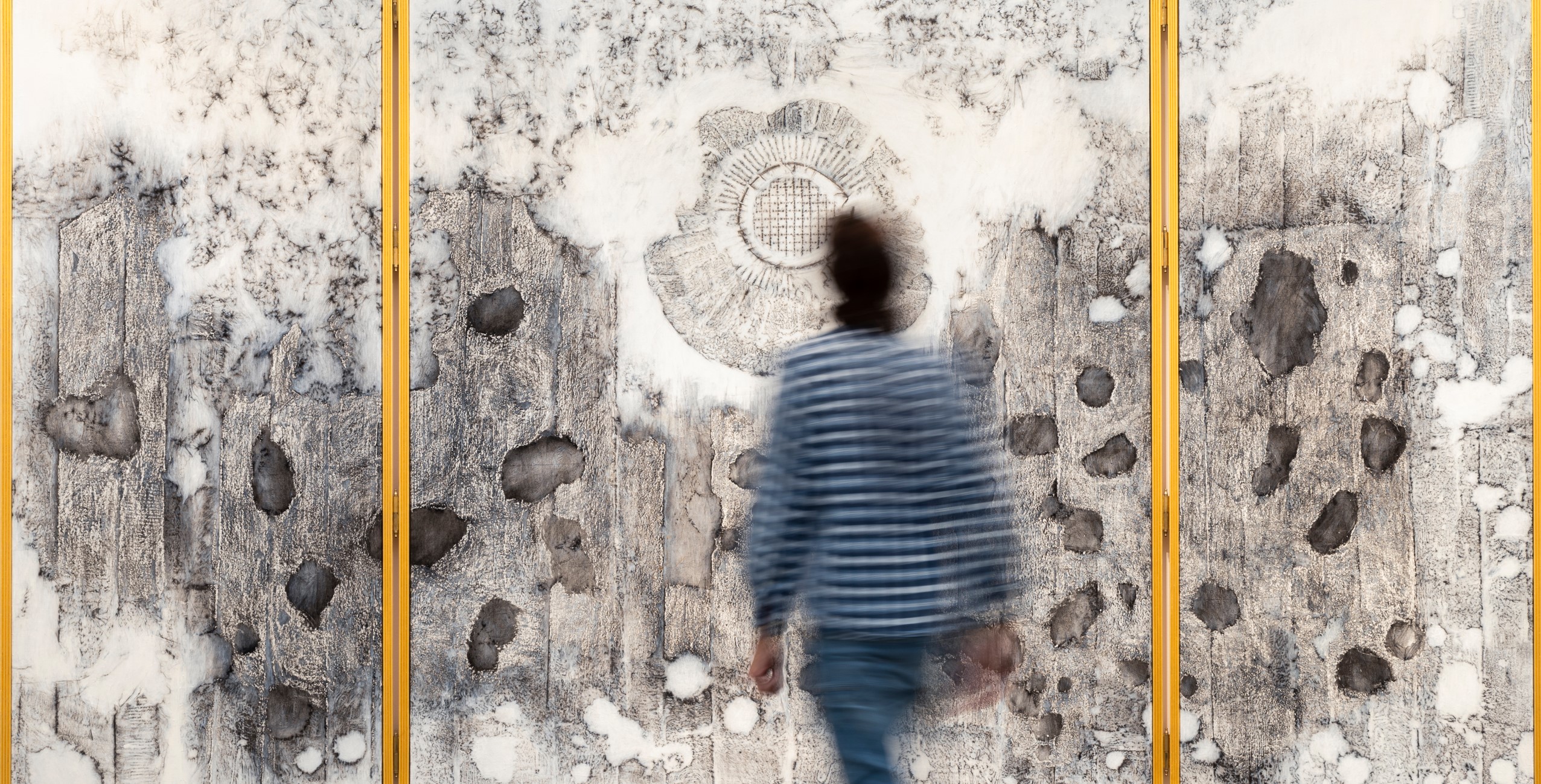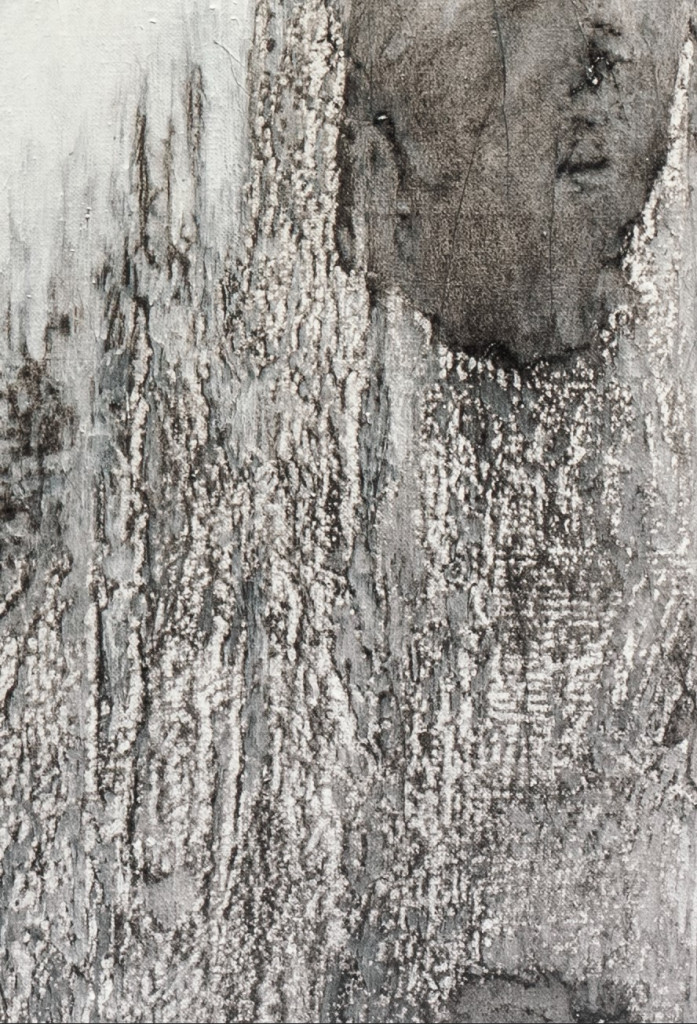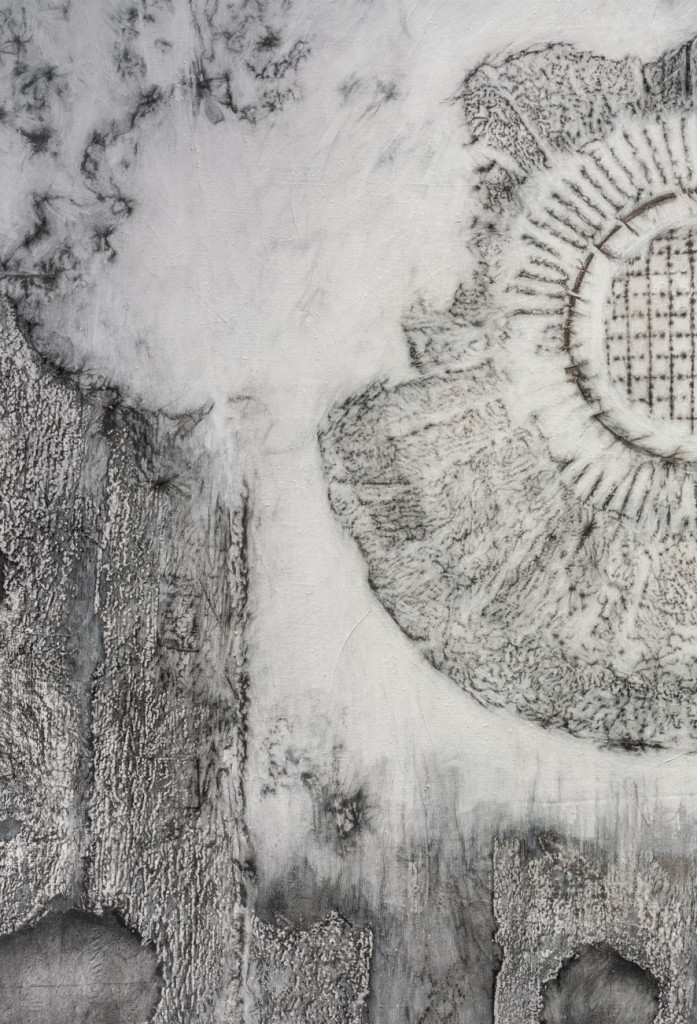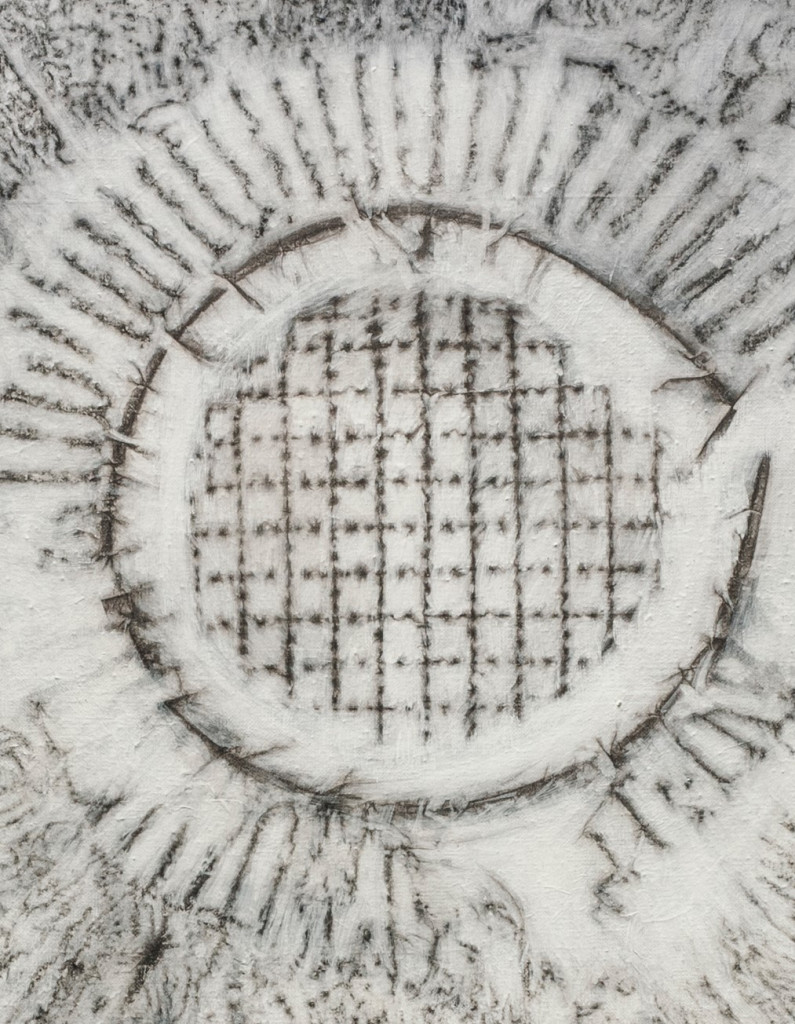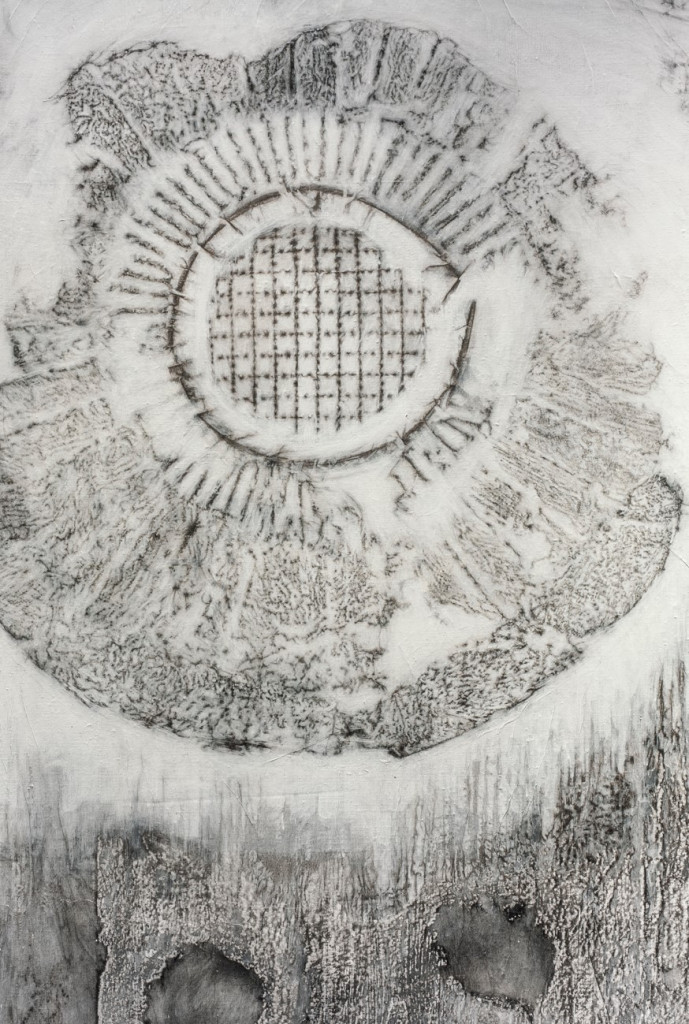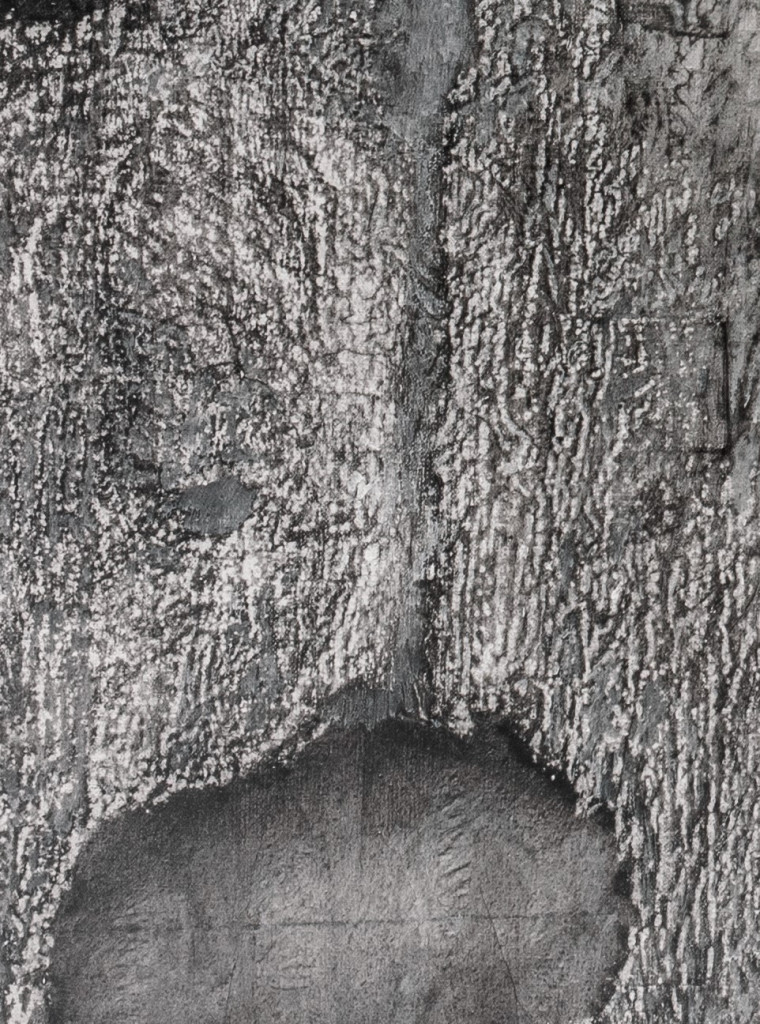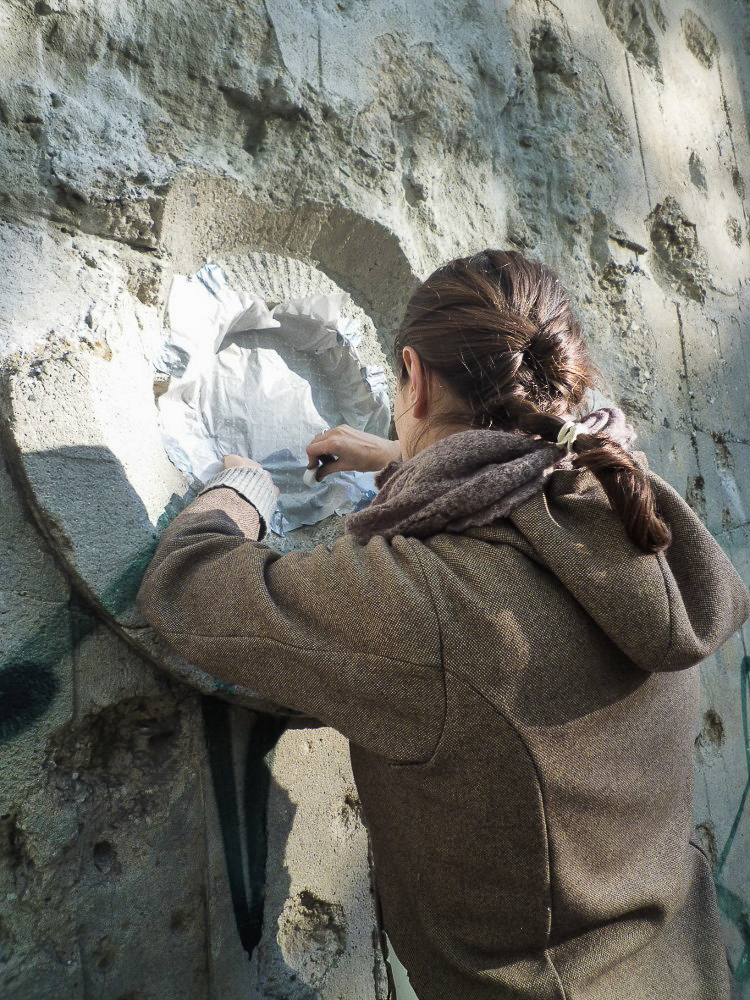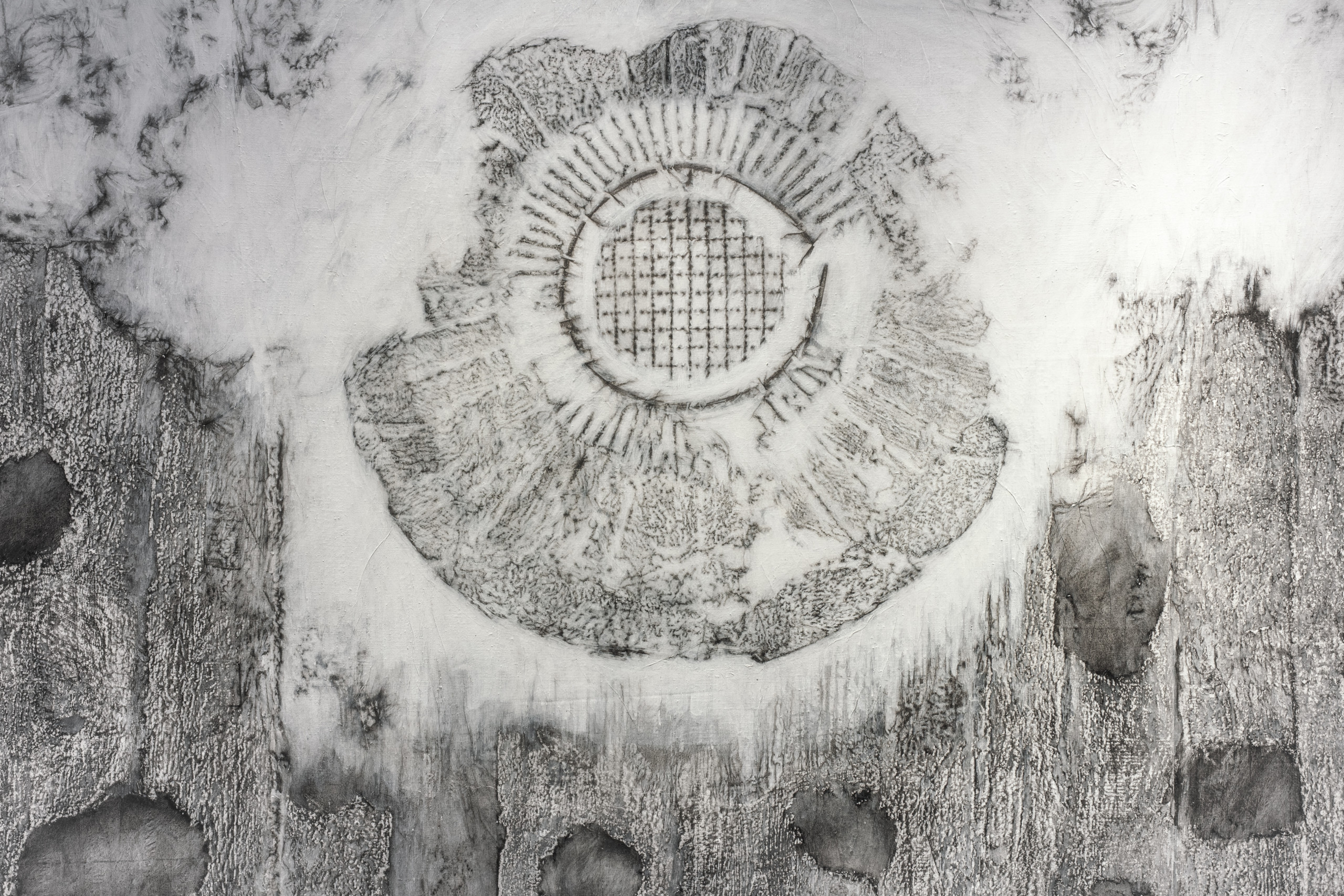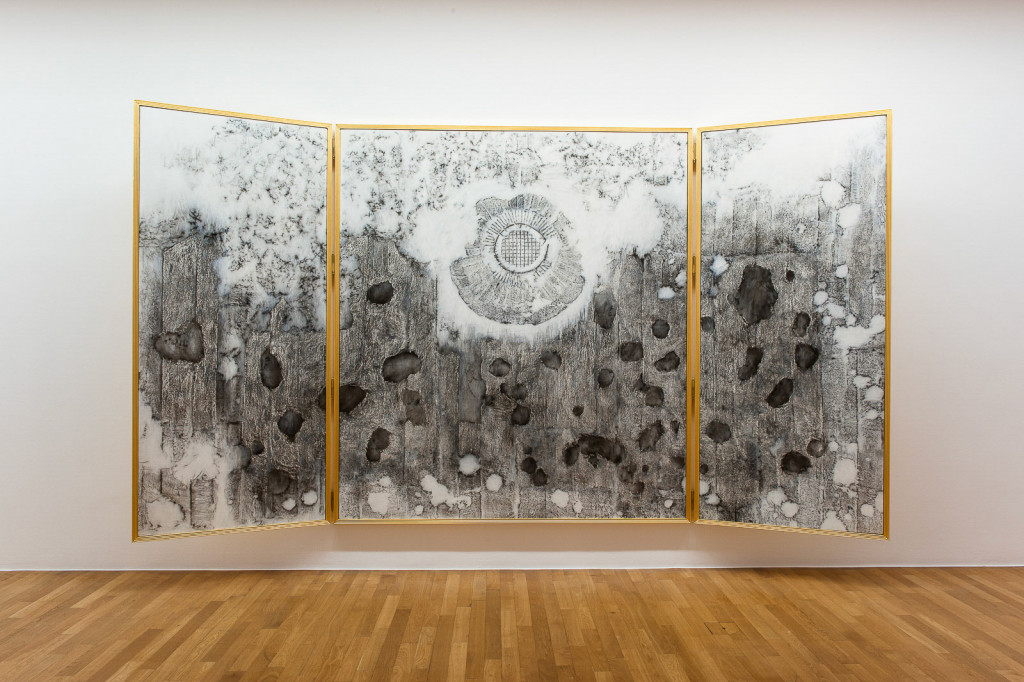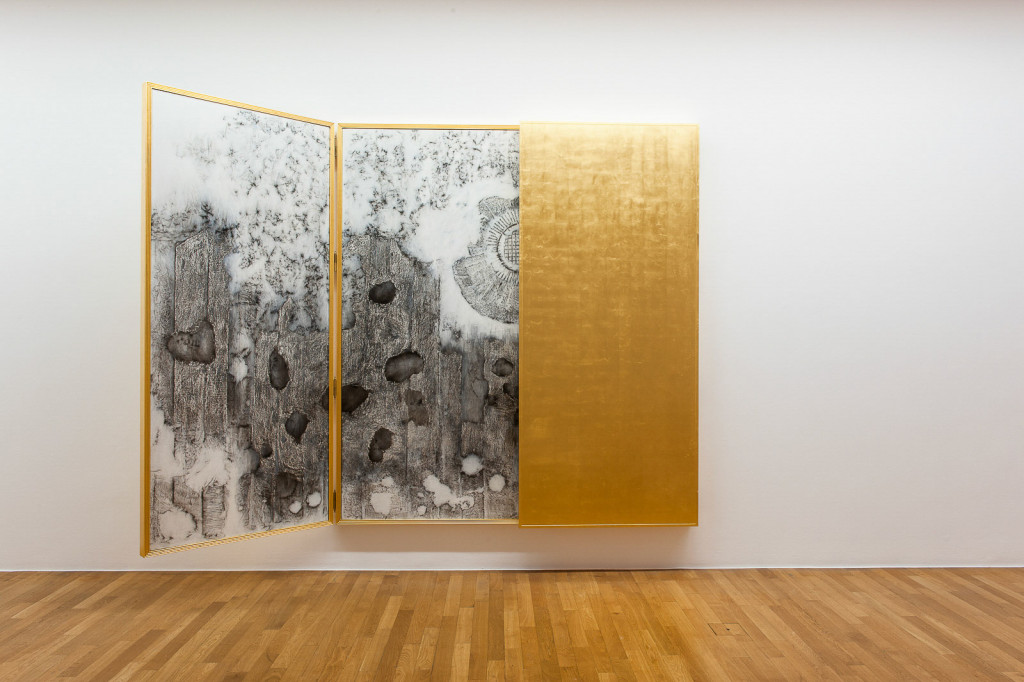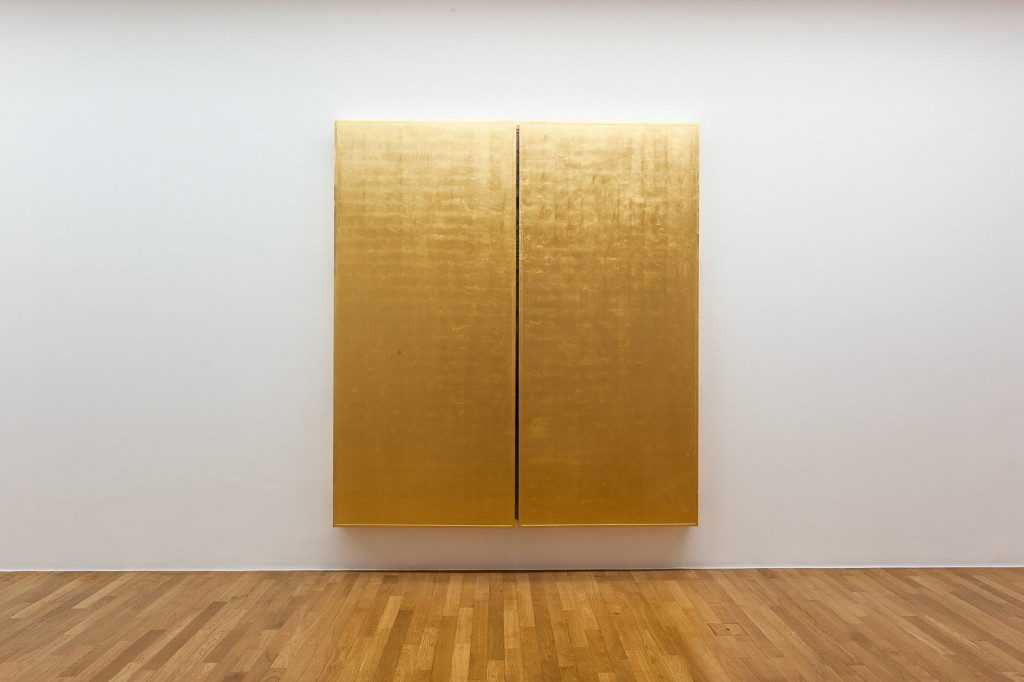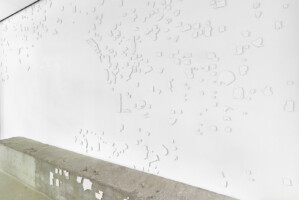The Altarpiece is a transfer print taken from the western wall of a Second World War bunker in the center of Berlin. The object defies the historical dialectics of a real object (an air-raid shelter in Berlin-Mitte) with strategies of remembrance and political interpretations.
The upcycling of the former bunker into a museum for contemporary art is symptomatic of the postwar history of West Germany. It tells the brief story of reuse and redesign that suspends the darker chapters of historical monuments and transforms the shared knowledge of history and places. While history changes the meanings of artifacts, new meanings also seem to change one’s feelings about history and, in this case, a people’s history. The trans-formation from a bunker for civilians during wartime into a remand prison during the occupation, then into a textile and food storage space–in other words, a giant refrigerator–during the 1950s, announced somehow the “Wirtschaftswunder,” the new growth during the postwar era, mostly in the western parts of Germany.
Whether or not a historical object is worthy of conservation is entirely dependent upon one’s perspective–is a building whose walls are covered with traces of bullet holes considered a memorial of war or just a damaged wall in need of renovation?
